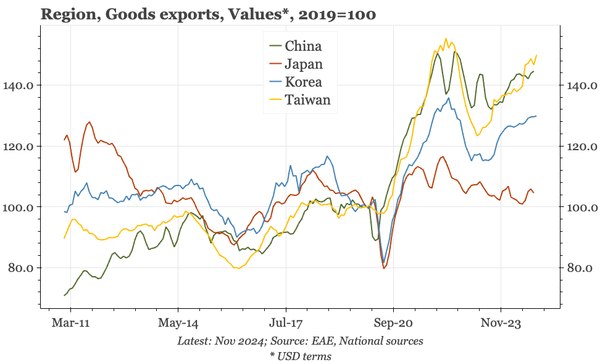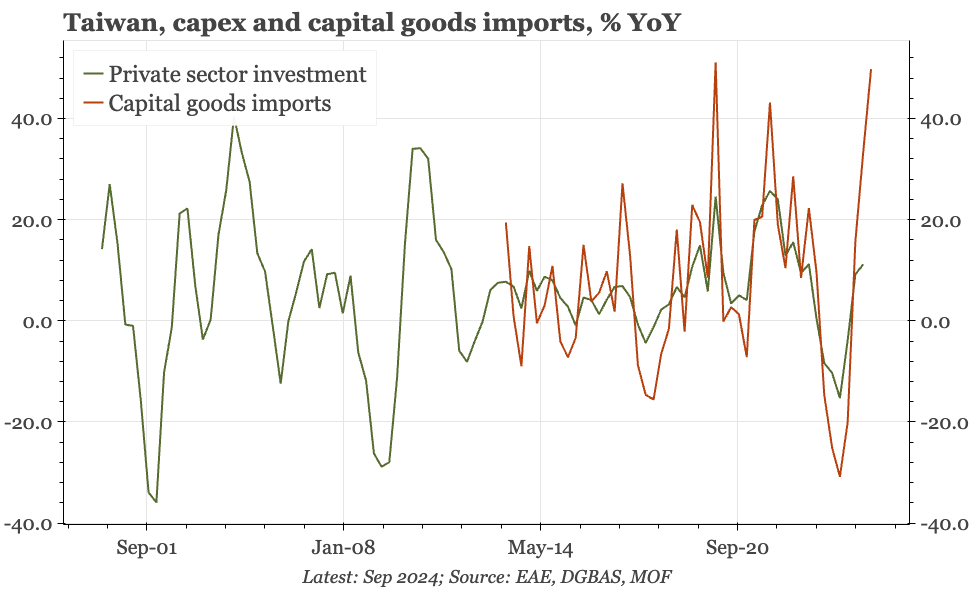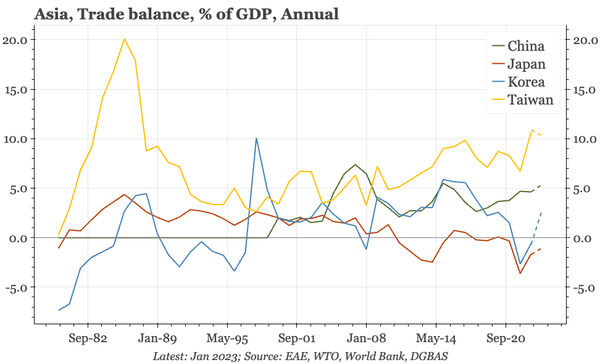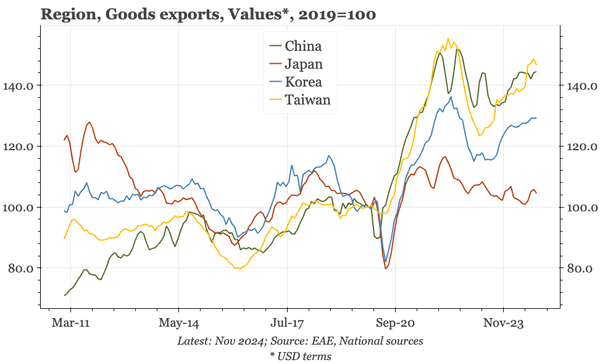
Paul Cavey
Taiwan – peaking, but not yet slowing
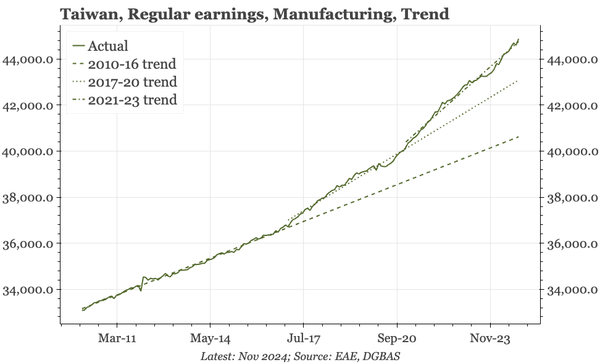
Taiwan has the strongest cyclical picture in the region. It isn't gaining further momentum, so rate hikes aren't likely, but nor are cuts. The other big factor is Trump. He won't like either Taiwan's massive trade surplus, or its modest military spending.
Japan – consumption still soft

Data today show consumption still weak. But I don't think this is critical. Ueda recently was talking about better spending, which is clear in per capita terms. The aggregate is held down by the falling population, but that decline is also behind the increasingly clear trend of wage growth.
Japan – more incrementally positive wage indicators

Today's labour market indicators – official wage data for November, and the Q1 regional report from the BOJ – don't suggest that momentum is picking up sharply. But they do indicate that the labour market is tight, and wage growth continuing to trend up.
China – core CPI back to +1%
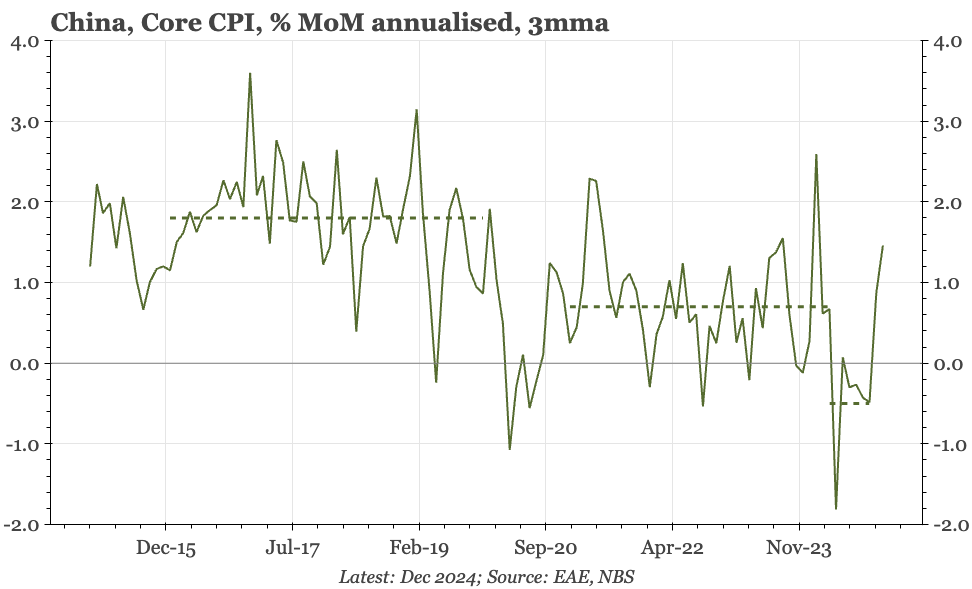
After being -ve for most of 2024, core CPI saar rose in Q4. That seems unlikely to sustain, given the 2024 policy boost is fading. However, that core has picked up is at odds with the consensus interpretation of today's data, while being in line with the relative stability of PMI output prices.
Japan – part-time wage strength
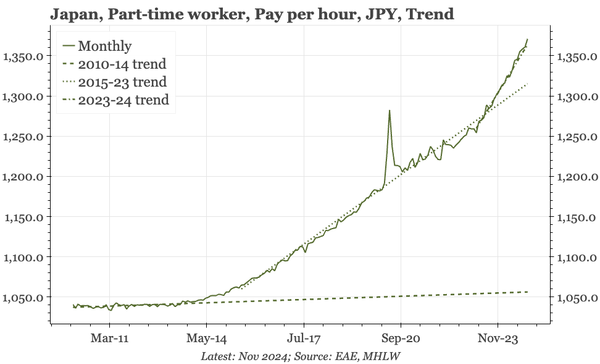
Base pay for full-time workers has plateaued at a bit below 3% since Q324. That loss of momentum isn't especially worrying: in 2023/24 there was a similar pause before real-acceleration. Part-time wage growth continues to trend up, reaching 4.7% YoY in November.
Region - Samsung v TSMC = Korea v Taiwan
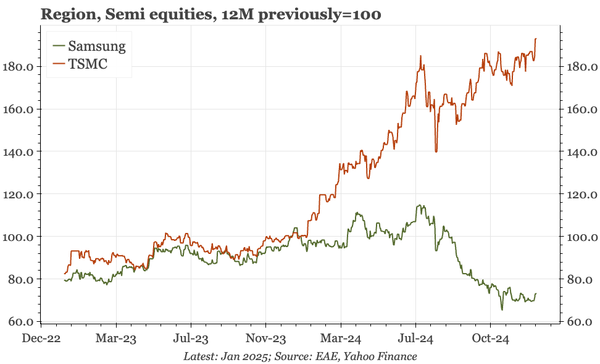
There are other things that explain Korea's economic underperformance relative to Taiwan since 2020, with consumption being one of them. But the stumbles at Samsung are still particularly important, happening while TSMC goes from strength to strength.
Japan – a hint of real reflation
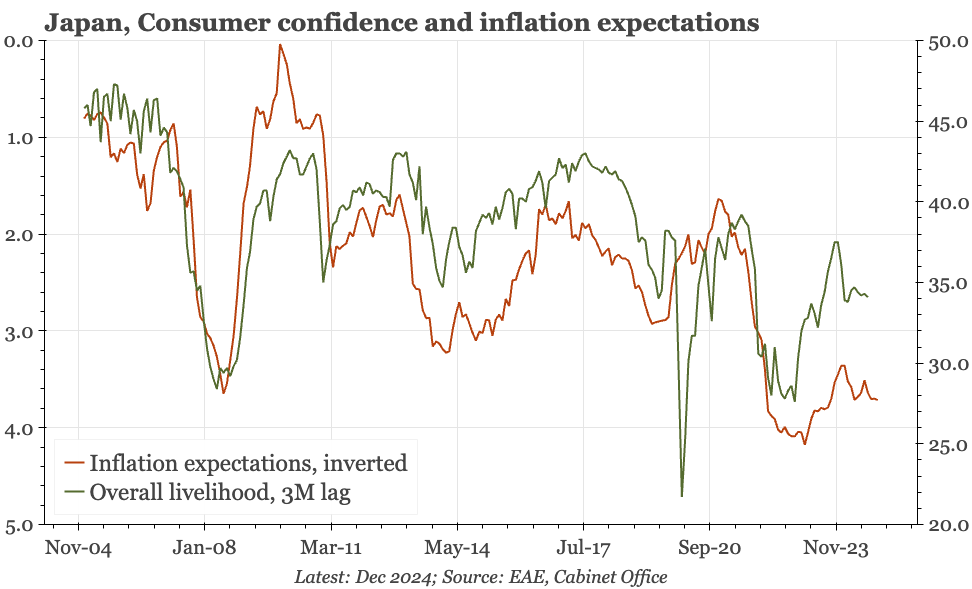
Given the relationship is far from perfect, it would be wrong to read too much into this first chart. However, it is still notable that the rebound in consumer confidence hasn't relapsed despite the continued strength of inflation expectations. That at least gives a hint of substantive change.
Korea – another step lower
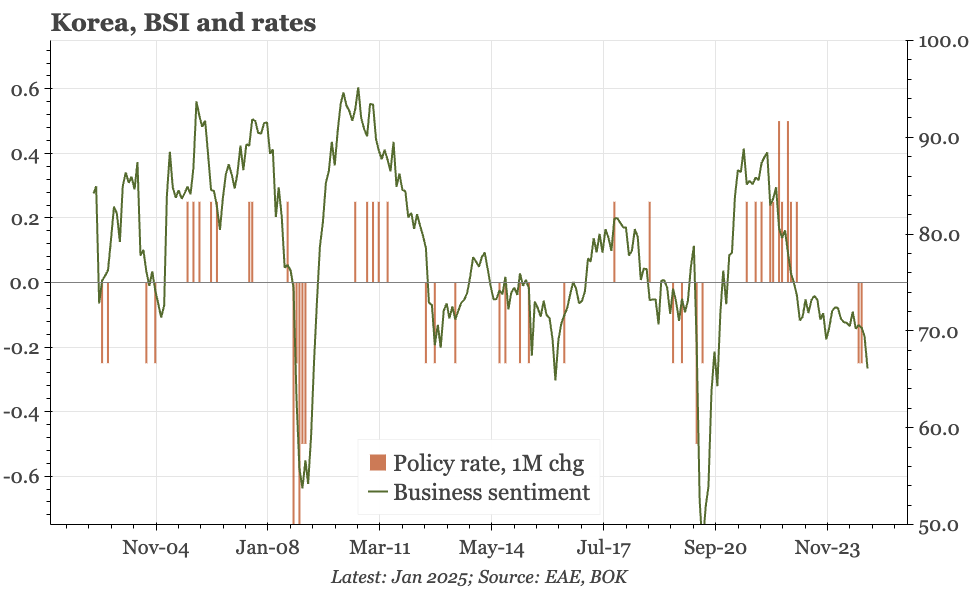
Recent data and the minutes of the November BOK meeting offer a good opportunity to look at Korea in light of the latest bout of political turmoil. The conclusion: a weak cycle is getting weaker, and so exchange rate depreciation is unlikely to stop the BOK cutting further.
Japan – part-time wage inflation rising further

While full-time worker pay clearly matters, it is also important to watch wage inflation for part-timers. That this is already running at 4% illustrates the real tightness in the labour market. There's more upside ahead, with reports that the big retailer Aeon is planning another 7% hike in 2025.
Taiwan – still likely on hold
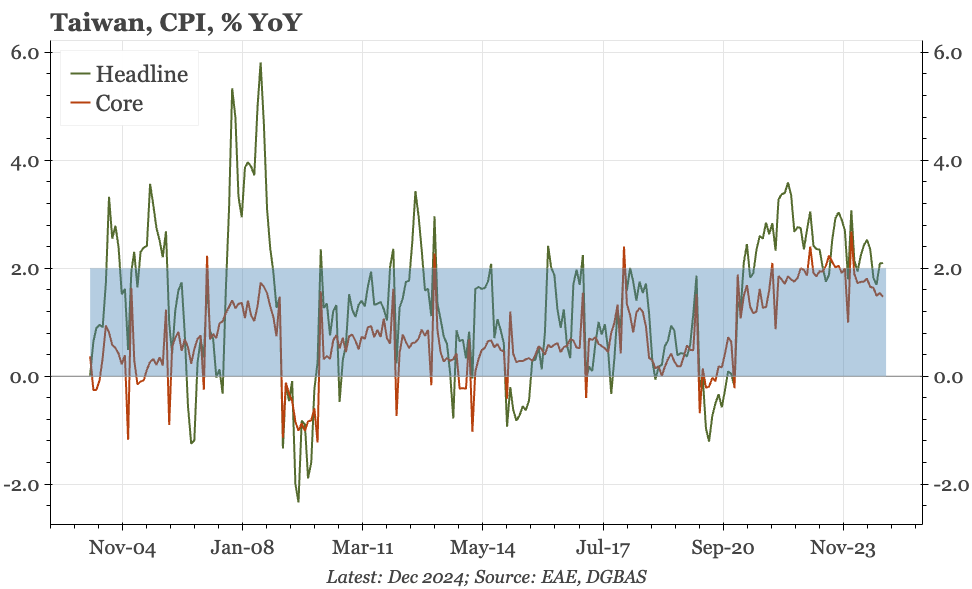
Headline inflation ticked up in December to back above 2%, but core continued to ease. With property cooling too, the likelihood of further monetary tightening is receding. At the same time, the strength of semi equities and the services PMI mean no urgency to cut either.
Japan – what breaks the range?
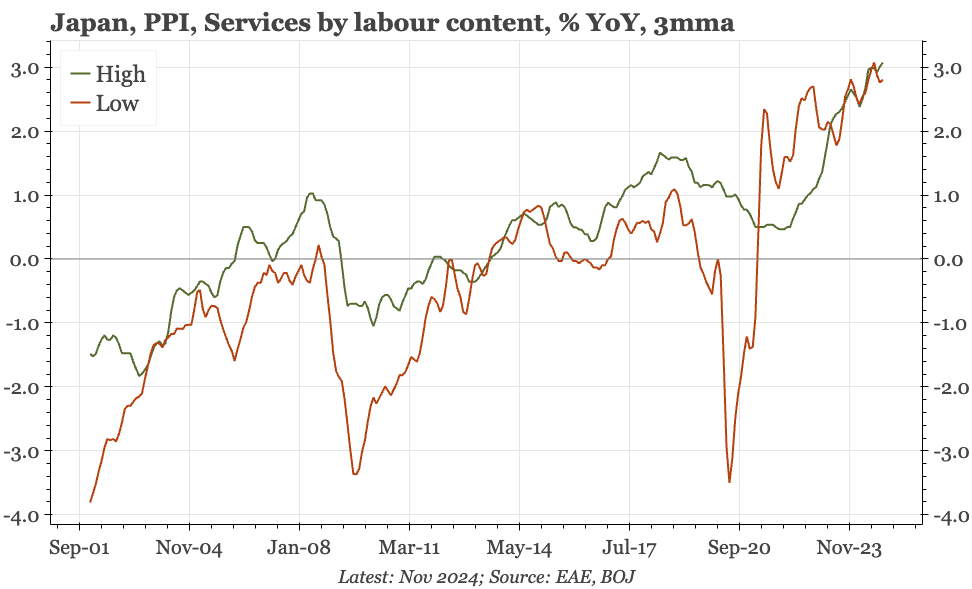
After a couple of weeks travelling there, and recent data and policy releases, it is clear that Japan's cycle and inflation stories are intact. That makes a Q1 BOJ hike likely, but on its own, that won't mean much for $JPY. More interesting is to ask what might get the bank to move more quickly.
Taiwan – overseas production ratio lowest since 2008
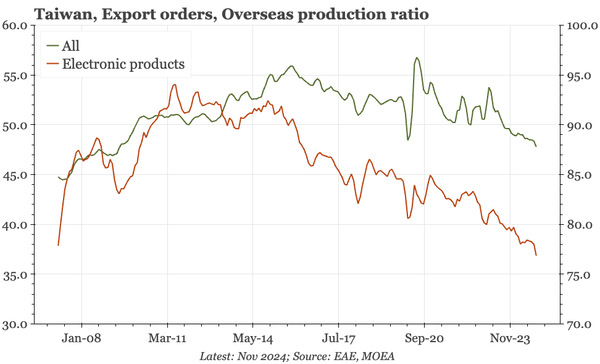
Taiwan's export orders data today show another decline in the overseas production ratio, especially for electronics products. That implies some move in the supply-chain from China, which helps boost Taiwan's growth, but at the expense of more direct trade and a surging trade surplus with the US.
Taiwan – firmly on hold
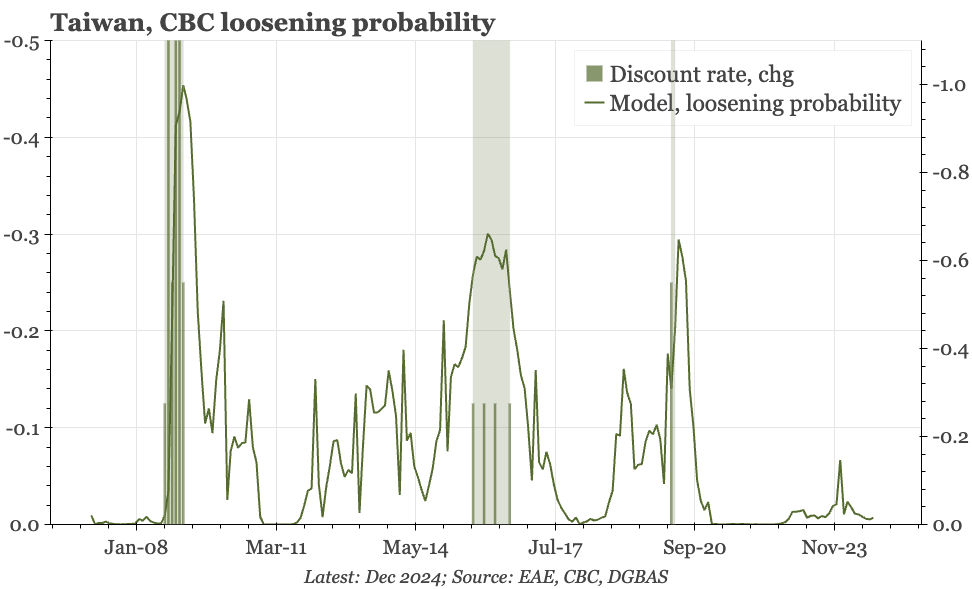
The CBC kept policy unchanged yesterday, and won't be in a rush to move in 2025. Growth will be slower, but the bank isn't particularly worried about either exports, or domestic demand. Optimism about consumption is partly because of expected wage hikes, which in turn will support inflation.
Japan – core inflation at 2%
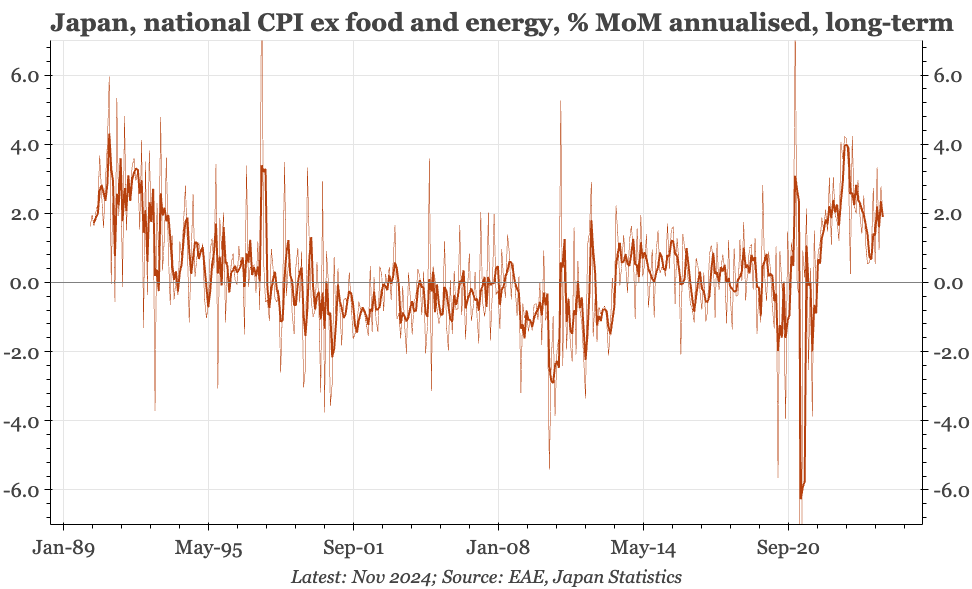
Today's data show inflation excluding all food and energy in November at 2% saar. Some of the details are also firm, with the diffusion stable and a further pick-up in rental inflation. That though is still at less than 1%, and anyway, wage inflation now seems more important for the BOJ than CPI.
Japan – BOJ still not moving
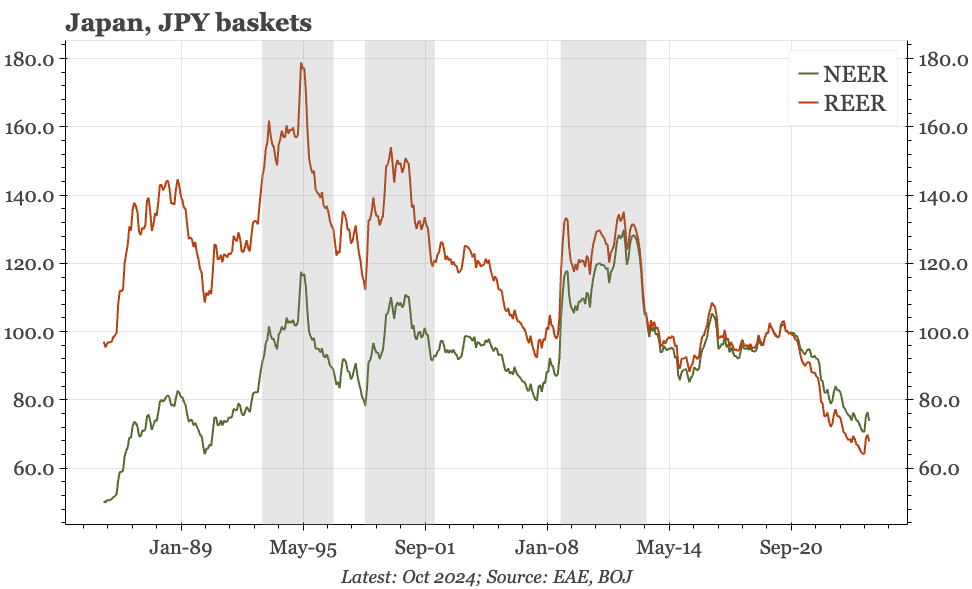
There was a dissenting proposal to hike today, and while the majority voted to stay on hold, Ueda suggested more clarity on wages would clear the way for rates to go up. That makes the early January meeting of BOJ regional managers important, though for the JPY, that's quite a while to wait.
Japan – exports still sluggish

The weak JPY is having little impact on Japan's export performance. Yesterday's November data show export volumes still very sluggish, and continuing to underperform the rest of the region. Services are doing better, though even here, Japan isn't clearly outperforming.
Region – Back to the Future: East Asia and Trump 2.0

The film Back to the Future came out in 1985, and with inflation in Japan, deflation in China, and big external surpluses once again, there are all sorts of regional economic themes that have echoes of then. Here's a podcast in which I discuss the implications, with links to the underlying research.
Japan – same price/jobs story in PMI
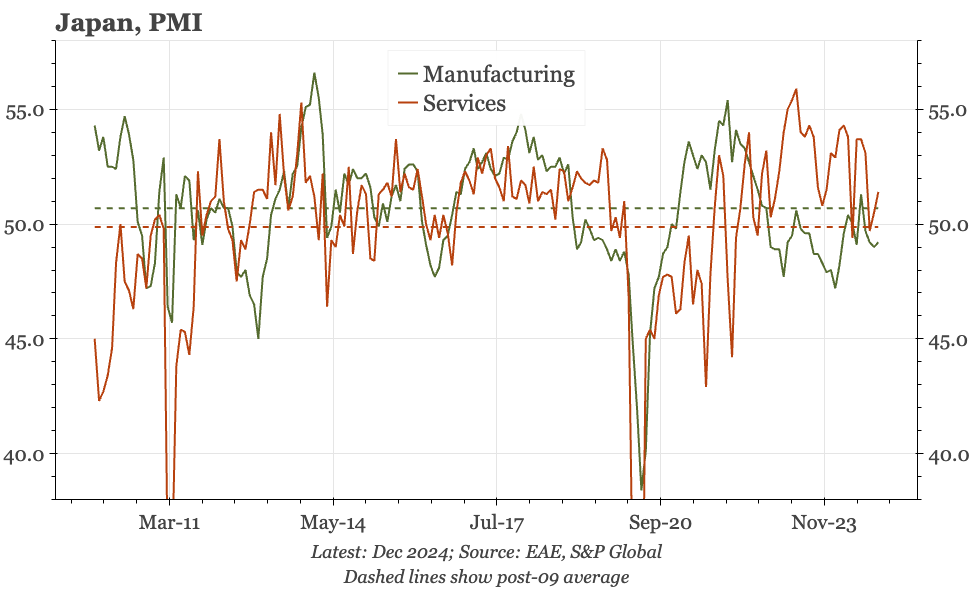
Services sentiment in the PMI is recovering from the October drop, but not as quickly as in other surveys. The tone on jobs and prices survived that dip, and concerns about "labour constraints and the impact of rising costs", with feed through to output prices, were prominent again in December.
Taiwan – how to dispose of USD100bn?
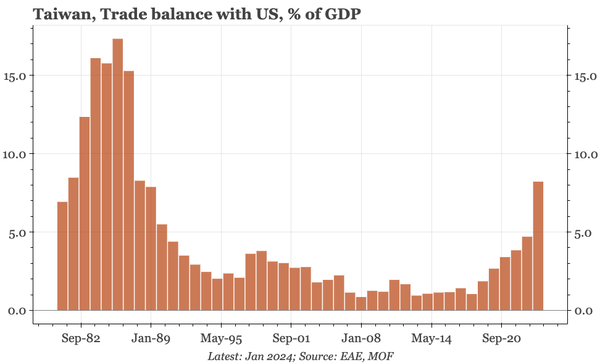
There's rarely much interest in Taiwan macro. But 2025 could be different: with post-2020 domestic economic lift-off, and the return of Trump, the circumstances that have kept the TWD undervalued for 20 years might be changing. This is a detailed chart pack looking at the issues involved.
China – neither better nor worse
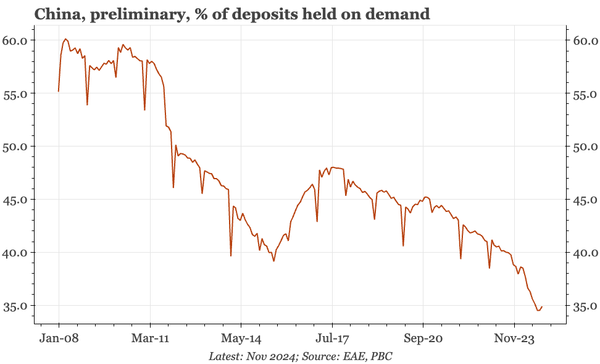
An easing of home price deflation and the decline in narrow money growth keep alive an upside scenario where individual investors buy into the idea that policy is putting a floor under growth. But the continued fall in property sales and weakening of credit dhow any turnaround is tentative at best.
Japan – still warming up
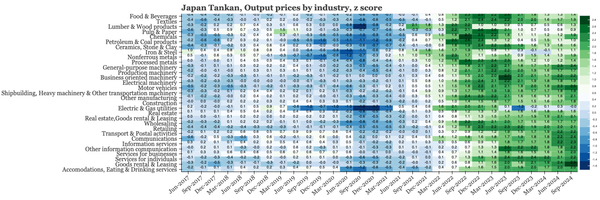
The BOJ releases its quarterly Tankan survey in two parts. The summary was published Friday, and today's full release confirms the story: the forecast scores point to a labour market that is still tightening, and output price pressure that is continuing to build.
